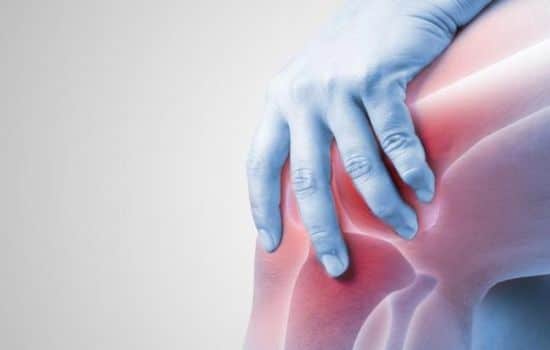Ads
Joint pain can be one of the most debilitating conditions we face in our daily lives.
From chronic discomfort to morning stiffness, joint discomfort affects millions of people around the world.
However, there is good news: there are natural methods that can provide significant relief, and among them, chas are rapidly gaining popularity.
In this post, we'll explore how chas, a traditional drink packed with health benefits, can become your perfect ally against joint pain.
Ads
Discover the secrets of these infusions that not only calm the mind but also have anti-inflammatory and analgesic properties that can do wonders for your joints.
See also:
- Master Fishing with Apps!
- Infusions to combat anxiety
- Boost your mobile with 5G
- Connect at all times
- Radio without limits
But we won't stop there. Meet Ada, your digital health companion, who will guide you on this journey to a pain-free life.
Ads
Ada will not only provide you with detailed information on how the chas can help you, but will also offer personalized recommendations based on your specific needs and conditions.
In addition, we'll analyze scientific studies that support the effectiveness of cha teas in treating joint pain and share testimonials from people who have found relief with these wonderful infusions. With Ada's guidance, you'll be able to make informed decisions and improve your overall well-being.
Get ready to discover a path to relief you may not have considered before. Chas and Ada are here to help you move with greater freedom and less pain. Feel the relief in every movement and transform your life with these simple yet powerful natural allies!
Related publications:
The Role of Chas in Joint Pain Relief
Herbal teas, commonly known as infusions or herbal teas, have been used for centuries in various cultures to relieve a wide range of ailments, including joint pain. The anti-inflammatory and analgesic properties of certain herbs can be especially effective in reducing joint inflammation and pain.
Turmeric tea, for example, contains curcumin, a compound with strong anti-inflammatory properties that can reduce joint inflammation and pain. Ginger tea is also known for its anti-inflammatory effects and can help relieve joint pain and stiffness. Other herbs like chamomile and green tea contain antioxidants that can protect joint cells from oxidative damage and reduce inflammation.
Incorporating these chafing dishes into your daily routine can offer natural and sustainable relief for those suffering from joint pain. However, it's important to remember that while chafing dishes can be beneficial, they should not replace conventional medical treatments. It's crucial to consult with a healthcare professional before starting any new treatment regimen.
Ada: Your Digital Health Companion
In the digital age, technology has transformed the way we manage our health. Ada, a digital health app, is a prime example of how artificial intelligence can provide personalized and accessible support for joint pain management.
Ada uses advanced algorithms and an extensive database of symptoms and medical conditions to offer preliminary diagnoses and personalized recommendations. By entering symptoms and medical history into the app, users can receive a detailed assessment that helps them better understand their condition and make informed decisions about their treatment.
One of Ada's most valuable features is its ability to provide reminders and ongoing tracking. This is especially useful for people with chronic conditions, such as arthritis, that require constant monitoring and proactive management. Ada can send reminders to take medications, perform recommended exercises, and record symptoms, facilitating more effective joint pain management.
Integrating Chas and Ada for Effective Joint Pain Management
The combination of natural treatments and digital health technology can offer a comprehensive and holistic approach to joint pain management. The chas can provide symptomatic relief and improve overall well-being, while Ada can offer ongoing, personalized support.
To effectively integrate both approaches, it's important to establish a daily routine that incorporates the consumption of anti-inflammatory teas and the regular use of Ada. For example, starting the day with a cup of turmeric or ginger tea can help reduce inflammation and morning joint pain. Throughout the day, using Ada to record symptoms and receive reminders can improve treatment adherence and provide a better understanding of how symptoms vary.
Continuing education and treatment adaptation are crucial for successful joint pain management. Ada can offer up-to-date information and recommendations based on the latest medical advances, while treatments can be tailored to individual needs and preferences. This combination allows for more personalized and effective joint pain management.
Additional Benefits of Chas in Joint Pain Management
In addition to their anti-inflammatory and analgesic properties, cha offers several additional benefits that may contribute to joint pain relief. Many infusions have antioxidant properties that help protect cells from oxidative damage, which can be particularly beneficial for joints affected by wear and tear and chronic inflammation.
Green tea, for example, contains catechins, antioxidants that can reduce oxidative stress and improve joint health. Chamomile is not only anti-inflammatory but also has relaxing effects that can help reduce muscle tension and stress, factors that can aggravate joint pain.
Peppermint tea, known for its analgesic properties, can provide short-term relief from joint pain. Dandelion and nettle infusions are also known for their diuretic properties, which can help reduce fluid retention and inflammation in the joints.
The versatility of herbs allows for personalized treatment. Individuals can experiment with different herbal combinations to find the blend that best relieves their symptoms. Open communication with healthcare professionals is essential to ensure that the herbs chosen are safe and effective in combination with other treatments.
The Role of Physical Activity and ADA in Joint Pain Management
Physical activity is a key component in managing joint pain. Regular exercise can strengthen the muscles around the joints, improve mobility, and reduce pain. Ada can be an invaluable tool for planning and monitoring an appropriate exercise regimen for each individual.
Ada offers personalized exercise recommendations based on the user's specific condition and physical activity level. This can include low-impact exercises such as walking, swimming, or yoga, which are especially beneficial for people with joint pain. The app can also provide detailed instructions and reminders for stretching and strengthening exercises.
Continuous monitoring through Ada allows the exercise regimen to be adjusted as needed, based on feedback and recorded symptoms. This ensures that the exercise program is effective and safe, minimizing the risk of injury and pain exacerbation.
Additionally, Ada can help users set realistic goals and track their progress, which can be motivating and contribute to long-term success. Integrating physical activity with chas consumption and Ada use can provide a holistic and balanced approach to joint pain management.
Final Considerations on the Use of Chas and Ada
The use of Chas and Ada in the management of joint pain should be considered as part of a comprehensive approach that includes a balanced diet, regular physical activity, and ongoing medical follow-up. It is important for users to consult with healthcare professionals before starting any new treatment or exercise routine to ensure it is safe and appropriate for their specific condition.
Personalization is key in joint pain management. What works for one person may not be effective for another, so it's essential to tailor the approach to individual needs. Ada offers the flexibility and support needed for this customization, while chas provide a natural and accessible option for pain relief.
Joint pain management is an ongoing process that requires constant attention and adjustment. The combination of natural treatments, digital health technology, and professional medical care can provide a holistic and effective approach, improving quality of life and allowing individuals to move with greater comfort and freedom.

Conclusion
In conclusion, the integration of herbs and digital health technology, such as Ada, offers a holistic and effective approach to joint pain management. The anti-inflammatory and analgesic properties of herbal teas such as turmeric, ginger, chamomile, and green tea, among others, provide natural and sustainable relief. Furthermore, the antioxidants present in these herbs protect joint cells from oxidative damage, improving long-term joint health.
On the other hand, Ada, your digital health companion, stands out for its ability to provide preliminary diagnoses, personalized recommendations, and ongoing follow-up. This is especially useful for those suffering from chronic conditions like arthritis, as it facilitates constant monitoring and proactive management. Ada also allows for the planning and monitoring of appropriate exercises, which is essential for strengthening the muscles around the joints and improving mobility.
The key to successful joint pain management lies in individualizing treatment. Establishing a daily routine that incorporates anti-inflammatory painkillers and regular use of Ada can significantly improve treatment adherence and provide a better understanding of symptom variability. It is crucial to maintain open communication with healthcare professionals to ensure that the chosen painkillers are safe and effective in combination with other treatments.
In short, the combination of natural treatments and digital health technology not only offers symptomatic relief but also empowers individuals with the knowledge and tools necessary to improve their quality of life. Feel the relief with every move!
Download the applications here:





